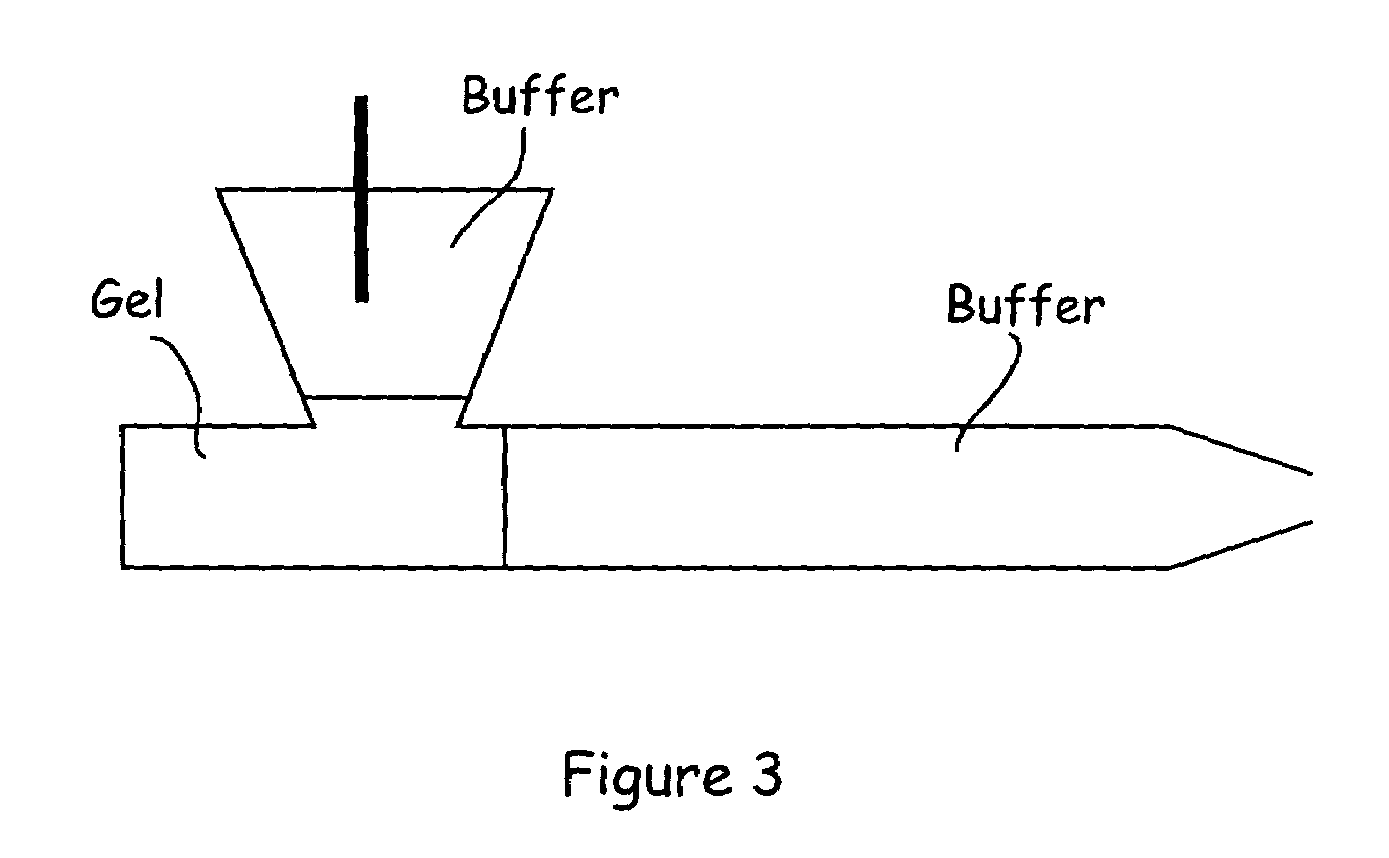Microfluidic devices and methods for performing temperature mediated reactions
a technology of microfluidic devices and temperature-mediated reactions, applied in specific use bioreactors/fermenters, laboratory glassware, biomass after-treatment, etc., can solve the problems of affecting the yield of desired specific, affecting the efficiency of amplification reactions, and temperature control of process parameters such as reagent concentration, etc., to achieve precise and efficient manner
- Summary
- Abstract
- Description
- Claims
- Application Information
AI Technical Summary
Benefits of technology
Problems solved by technology
Method used
Image
Examples
example 1
Ligand Induced Thermal Shift Assay
[0088]FIG. 6 provides a ligand induced thermal shift assay showing a thermal denaturation profile for streptavidin:biotin binding at 20 mM ANS, 85 mM HEPES and 170 mM NaCl at pH 7.5.
[0089]Aqueous solutions of Streptavidin and Biotin are prepared at the following ratios: 1:0, 2:1 and 1:3. The solutions are allowed to incubate for five minutes. 1-Anilinonnapthalene-8 sulfonic acid (1,8 ANS) and HEPES buffer are added to each solution. The final concentrations of the three solutions are as follows:[0090]1. 32 μM subunits of Streptavidin, 0 mM 1,8 ANS, 85 mM HEPES, 170 mM NaCl.[0091]2. 32 μM subunits of Streptavidin, 16 μM subunits Biotin, 20 mM 1,8 ANS, 85 mM HEPES, 170 mM NaCl.[0092]3. 32 μM subunits of Streptavidin, 96 μM subunits Biotin, 20 mM 1,8 ANS, 85 mM HEPES, 170 mM NaCl.
[0093]10 μL aliquots of each solution are added onto a planar microfluidic chip using pressure induced flow. The exposed solutions are covered with mineral oil to prevent evap...
PUM
| Property | Measurement | Unit |
|---|---|---|
| Temperature | aaaaa | aaaaa |
| Thermal stability | aaaaa | aaaaa |
| Electrical current | aaaaa | aaaaa |
Abstract
Description
Claims
Application Information
 Login to View More
Login to View More - R&D
- Intellectual Property
- Life Sciences
- Materials
- Tech Scout
- Unparalleled Data Quality
- Higher Quality Content
- 60% Fewer Hallucinations
Browse by: Latest US Patents, China's latest patents, Technical Efficacy Thesaurus, Application Domain, Technology Topic, Popular Technical Reports.
© 2025 PatSnap. All rights reserved.Legal|Privacy policy|Modern Slavery Act Transparency Statement|Sitemap|About US| Contact US: help@patsnap.com



